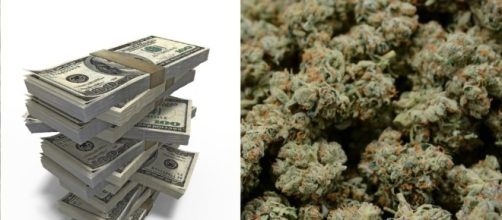As much debt as the United States is in itself, our government should diligently be looking for innovative ideas to get our national economy out of the hole. There’s an economist at Harvard named Jeffrey Miron who found that if the United States didn’t have to enforce prohibition on cannabis, the country would save $7.7 billion annually. Stephen Easton (another economist and writer for BusinessWeek) predicts even more, about $45 to $100 billion each year. This is after figuring in how much it would take to produce the drug, along with the amount of estimated marijuana customers.
Mexicans of the early 1900’s first introduced Americans to smoking weed recreationally, and in late 1914 the Harrison Narcotics Act was passed which prohibited narcotics in a citizen’s normal possession unless it was prescribed by a physician. Many acts have been passed over the years that have had to do with marijuana, including what was considered one of the worst by those who were for the legalization of cannabis, the Narcotics Control Act of 1956. This act boasted one of the highest penalties in history for the drug – two to ten years in jail with a fine of $20,000! That’s been repealed by the United States Congress since 1970, but just imagine if that was the same penalty today.
Marijuana profits in other countries
Jose Mujica, President of Uruguay, was trying to make this small country in South America the first state to ever be openly involved in the drug trade some years ago. According to an article by Raul Gallegos in The Globe and Mail newspaper entitled “Uruguay Pushes to Make Marijuana Sales Legal”, the 80+ year old leader of the country “understands that legalizing the drug business will do more to address trafficking than burning through billions of dollars to fight it.” DrugPolicy.org reported later that Uruguay was the first country on earth to make marijuana legal.
According to ProCon.org, 28 states and The District of Columbia have legalized medical marijuana (as of the writing of this article).
Each one on the list has different possession limits. For example, in 2010 Arizona passed Proposition 203 which allows a possession limit of 2.5 usable ounces of marijuana, 0-12 plants (Rhode Island passed Senate Bill 0710 even earlier than that, in 2006), and allows the exact same amount of bushes and utilizable weed). States like Colorado, Montana, and Vermont allow you to carry a certain amount on you, but don’t accept other states' registry identification cards.
More info about cannabis
The main chemical in marijuana is delta-9 tetrahydrocannabinol, otherwise known as THC. Most U.S. citizens still use the common nickname ‘weed’, but there are many more titles that were given to this plant over the years – ganja, pot, bud, cabbage, and green, to name a few.
The original name, Cannabis Sativa, was given to the medicating, mind altering, and nerve relaxing drug by Carl Linneous in 1753. It was legal in most states in the 1800’s and referred to as hemp, a strong fiber that was used to make everything from sails to clothing.

